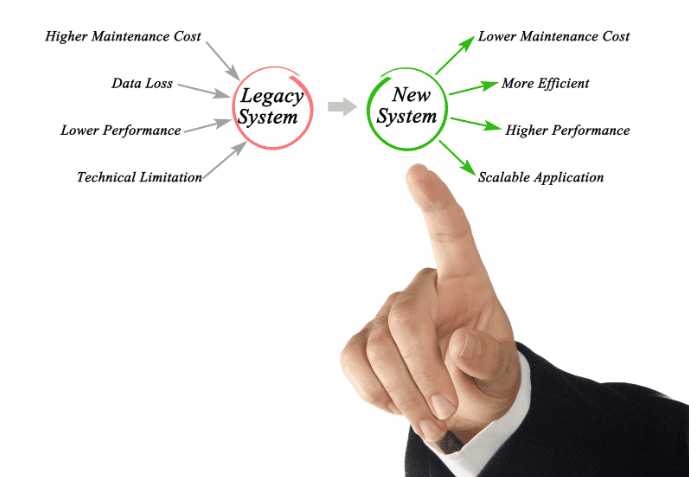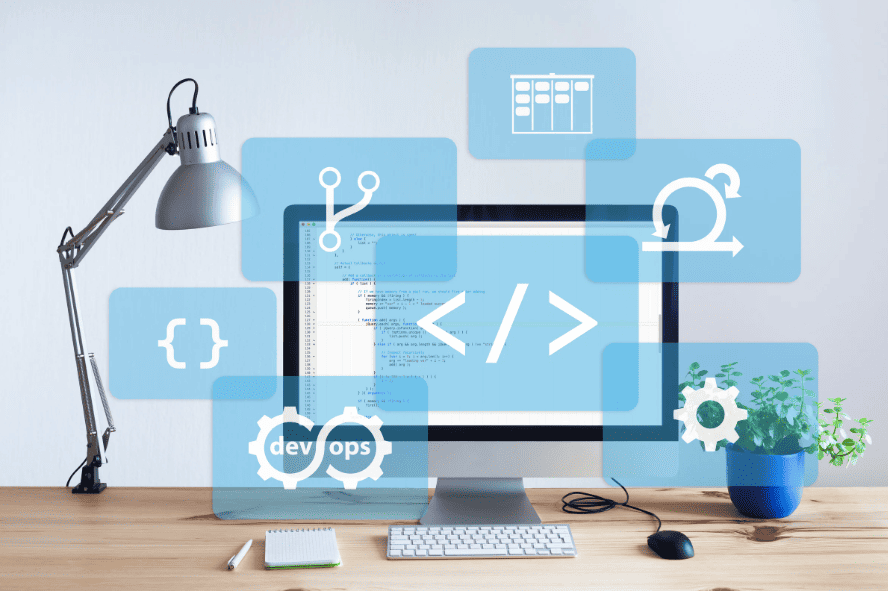The term “legacy system” refers to a software application that was built in an earlier era and is no longer maintained. These systems are often outdated, inefficient, and expensive to maintain.
Table of Contents
However, legacy systems can also be extremely valuable assets for organizations due to their deep knowledge of business processes and valuable data assets. As a result, many organizations find themselves stuck between moving away from their legacy systems or using them as-is for years into the future.
To help organizations navigate this complex decision space, we'll explore the role of DevOps consulting in transforming legacy systems into modern ones while highlighting some common challenges along the way (including security gaps).
We'll also discuss how some IT leaders have overcome these obstacles through innovative approaches such as cloud migration (see below) or strategic partnerships with emerging technology companies like Google Cloud Platform or Salesforce Einstein Analytics.

Understanding Legacy Systems
A legacy system is a software application that has been in use for more than 10 years, and it's likely that the original developers are no longer around. This makes it difficult to understand how the system works, which can make it harder to modify or update.
An assessment of your current legacy environment is essential for planning your transformation strategy. For example, if you have multiple applications running on different platforms, you may need some kind of middleware layer (like a gateway) between them so that they can communicate with each other through APIs and this will affect how you implement changes later on.
The Need for Transformation
You're probably familiar with the term “legacy system.” This is a system that was built before DevOps and cloud computing became popular, and it's often outdated and difficult to maintain.
Legacy systems are still in use at many organizations because they have a large number of users, dependencies, interconnections and interfaces (UDIs). In fact, many businesses depend on these legacy systems for their day-to-day operations.
A legacy system transformation is the process of modernizing your IT infrastructure so that you can use newer technologies like DevOps or cloud computing while keeping things running smoothly in production and avoiding outages or other issues that could hurt productivity or customer satisfaction levels.
DevOps: A Paradigm Shift
DevOps is a cultural and philosophical movement, not a technical one. DevOps is about collaboration, communication and trust. It's about speed and agility; continuous delivery and continuous improvement are two of its most visible manifestations.
DevOps also has roots in automation in fact, many people would say that it began as an automation framework for developers to use when they were working with production environments.
But there's more: if you look at DevOps as a whole (and there are many ways to do this), you'll see that it encompasses everything from self-service provisioning tools like Chef or Puppet all the way down to configuration management tools like Chef or Puppet themselves!

Role of DevOps Consulting
When it comes to legacy system transformation, DevOps consulting is a key component. A good DevOps consultant can help you understand your existing systems and processes, as well as design a transformation strategy using https://itoutposts.com/devops-consulting-company/ that will get you where you need to be. They'll also do the heavy lifting by helping implement that strategy and making sure it sticks.
Assessing the Legacy System Landscape
In order to understand how DevOps can help your organization, you need first to understand the legacy landscape. This means understanding the current state of affairs, as well as understanding current processes and pain points. It also means having a solid grasp on what capabilities are currently in place within your organization.
The best way to do this is by conducting an assessment a process that involves interviewing stakeholders across all departments (including IT), identifying pain points, assessing risk levels and determining where improvements could be made.
Designing the Legacy System Transformation Strategy
To design an effective transformation strategy, you must understand the legacy landscape, business goals, technology landscape, business processes and technical challenges. You'll also need to understand people challenges such as organizational culture or lack thereof.
Implementation and Migration
The migration process is crucial to the success of your DevOps transformation. It can be difficult for a company to move from one system to another, so it's important that you have a solid plan in place before you begin.
To start, it's helpful to create an inventory of all of your legacy systems and applications so that you know what needs to be migrated and when it needs to happen. Next, determine which legacy systems are critical for keeping your business running smoothly these are likely high-risk areas where testing should be done first before moving on to less important ones.
Once this part is figured out (and tested), then work on implementing and migrating these critical pieces first. When migrating data from one place to another:
- Use proper backups before making any changes so that if something goes wrong during migration there aren't any losses beyond what was expected/planned for beforehand
- Make sure all data has been successfully transferred over into new environments before deleting old ones
Continuous Integration and Deployment
CI/CD is a key component of DevOps. It's a process of automating the build, test and deployment of software. The goal is to improve efficiency and reduce errors by reducing human interaction with these tasks.
By implementing CI/CD, organizations can speed up their release cycles while increasing quality assurance by making sure their code meets certain standards before being deployed into production environments.
This allows them to get feedback from customers faster than ever before which is critical for companies that want to stay ahead in today's fast-paced marketplaces like healthcare or fintech (financial technology).
Monitoring and Continuous Improvement
Monitoring and continuous improvement are key components of DevOps. Monitoring can be used to identify areas in which the system needs improvement, and it can also be used as a way of tracking improvements over time.
In addition to helping you improve efficiency, quality and security (as discussed above), monitoring may also help you detect issues that could lead to outages or other problems down the line.
This is especially true if your legacy system has been running for some time without being updated with modern software architecture practices like automation or microservices and if this has been done without proper monitoring!
Challenges and Mitigations
As you begin to consider your own legacy system transformation, it's important to remember that there are many challenges to overcome. A phased approach is essential and a good plan will help you stay on track.
Communication is critical throughout the process; if your team isn't communicating well, they won't be able to work together effectively. A strong team is also essential for success in this type of project you'll need people who can communicate across disciplines and have different skill sets so that everyone can contribute where needed.
Testing and continuous improvement are key factors in any software development effort but especially when working with legacy systems; these practices allow developers and testers alike to catch bugs early in development which makes it easier (and cheaper) for teams working on other parts of the project later down the line because there's less codebase maintenance needed overall!
Finally automation should be used whenever possible because no one likes doing manual labor anymore than necessary.
Future Outlook
As we've discussed, legacy systems are often complex and difficult to update. They can be a burden on both developers and users, who may have to wait months or years for new features while they continue using outdated technology. As a result, many businesses are looking toward DevOps transformations in order to modernize their processes and increase efficiency across the board.
The benefits of this shift include faster development cycles that lead directly to higher quality products; more flexibility in terms of what features get implemented when; greater visibility into the state of any given project at any given time; lower costs due to streamlined operations; better communication between departments (and therefore fewer errors); increased security…the list goes on!
Conclusion
DevOps consulting is a key player in the transformation of legacy systems. The DevOps model is a paradigm shift from traditional software development, and it provides an effective way to manage the complexities of legacy systems.
As we have seen, there are many challenges when trying to implement DevOps in existing organizations; however, with the right approach and toolsets for assessment, implementation and migration can be made easier.



